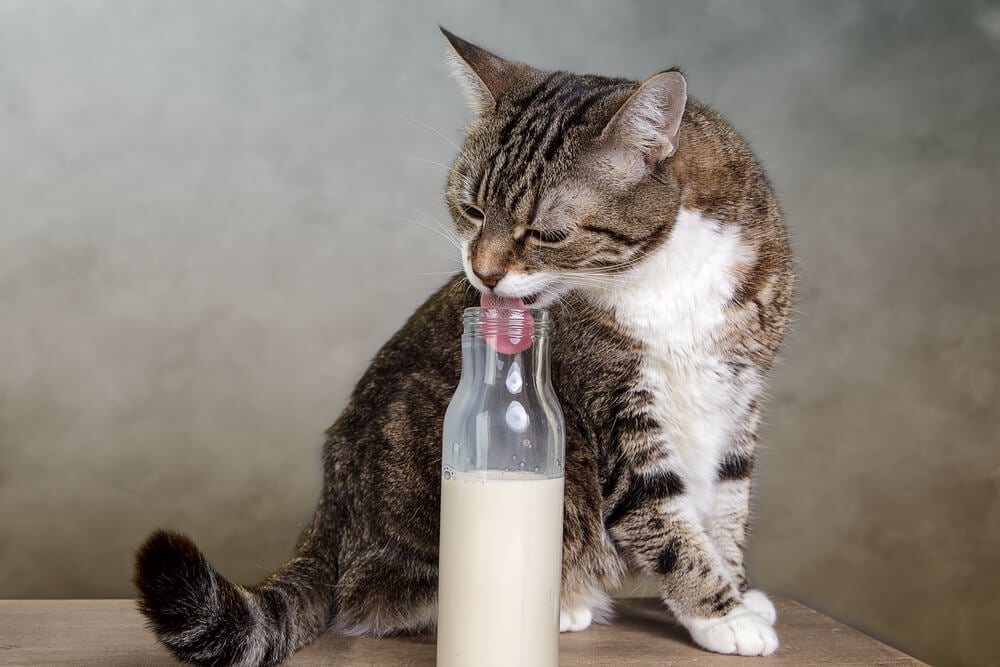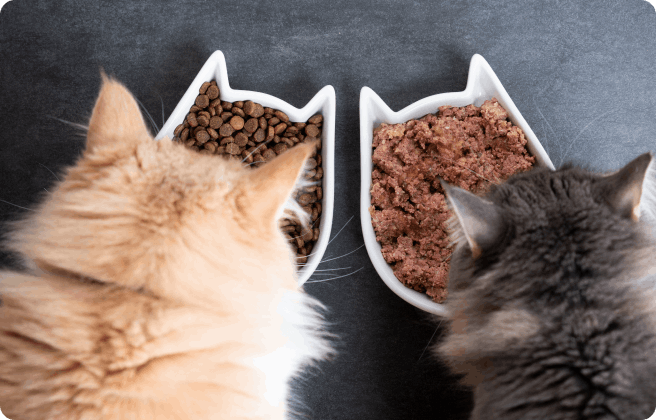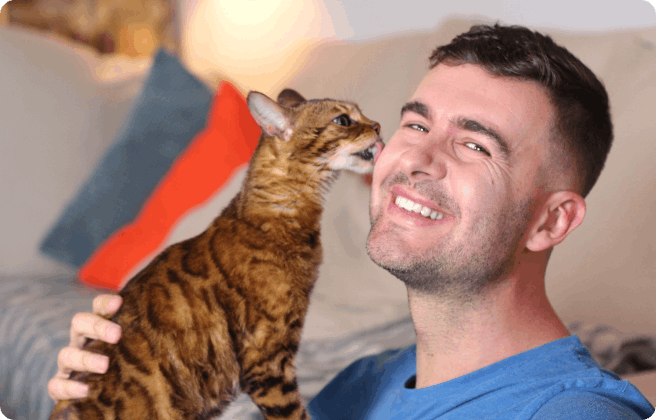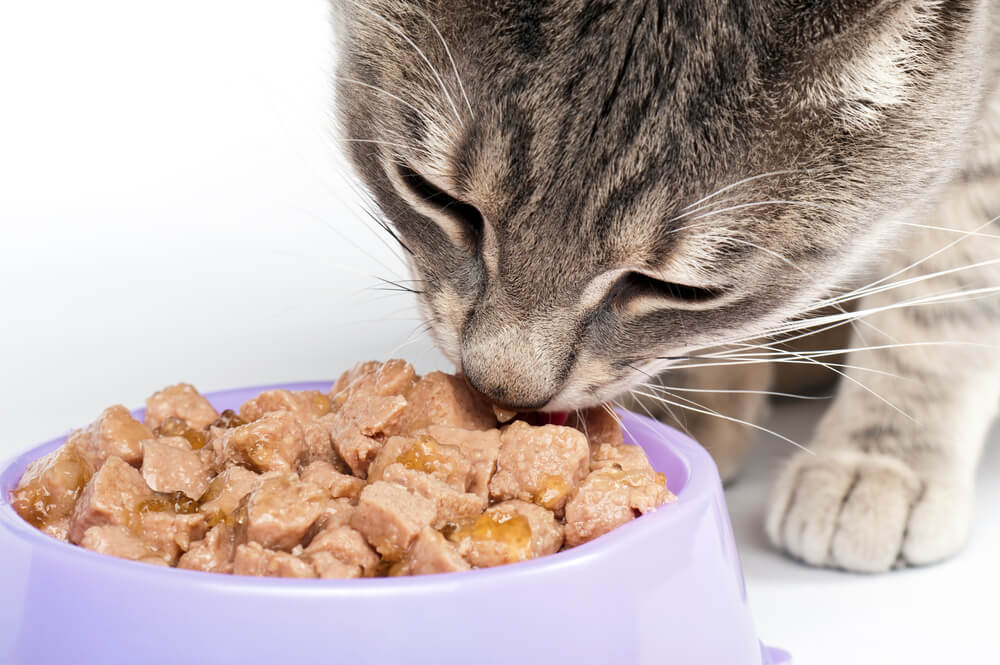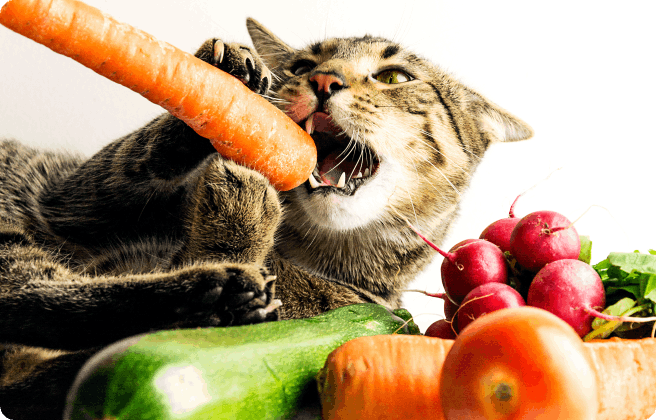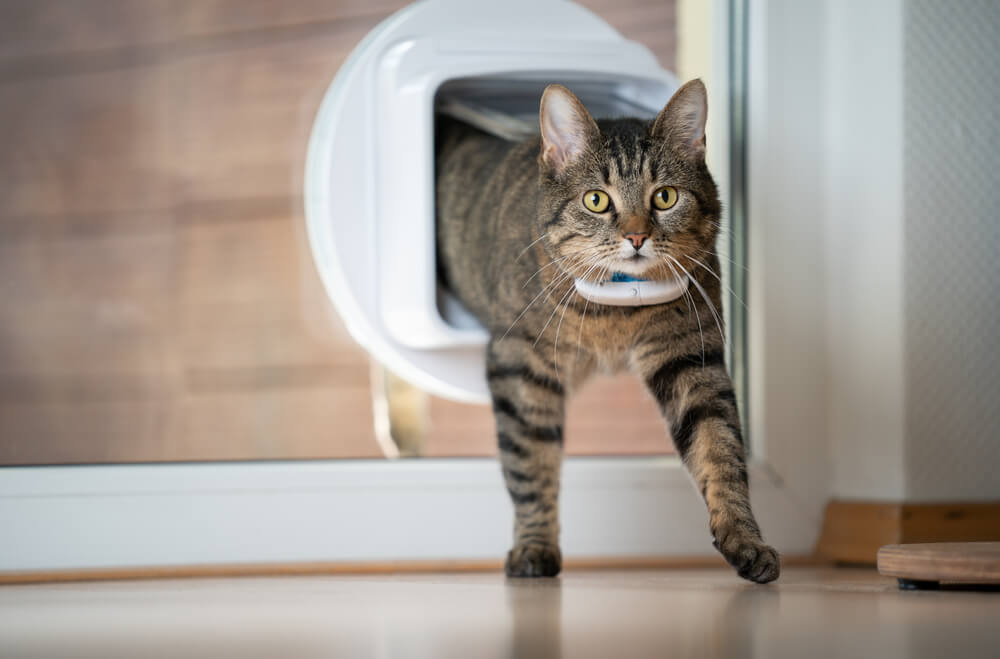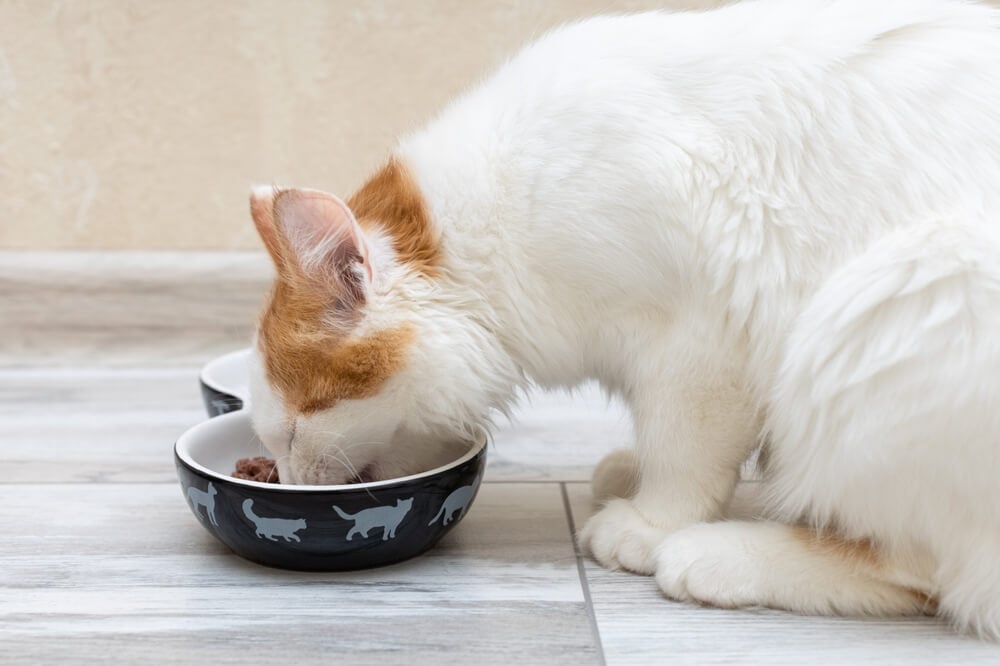
Choosing the right food, ensuring they have a balanced diet, and receiving the correct nutrients are key aspects of being a cat parent.
On top of this, how much and when to feed your cat adds an extra layer of confusion. Should you leave food out all day for your cat to graze on, or is a scheduled feeding routine the way to go?
Unfortunately, there’s no straight answer, it really just depends on you and your cat. However, in this article, we will discuss the pros and cons of scheduled feeding vs. free feeding to help you choose what’s best for your four-legged friend.
Free Feeding
Many cat owners opt for free feeding, where food is always available to their cat. While this may seem convenient, it can lead to certain issues.
Cats, like humans, are susceptible to overeating and obesity when food is constantly available. It can also be difficult to monitor your cat’s food intake and ensuring they receive the proper nutrients becomes challenging with free feeding.
If your cat hasn’t eaten their food after a day of sitting out, it’s best to throw it away to avoid the food going off and making your cat sick. If you feed your cat wet food, it’s advised to cover the remaining portion and place it in the refrigerator right away if not finished in one sitting.
Therefore, if your cat is on a wet diet, free feeding may not be the best option.
Should I leave food out overnight for my cat?
It’s perfectly safe to leave dry food overnight for your cat to graze on if it’s still fresh. However, if you have more than one pet in the house, this could pose issues as it’s difficult for you to monitor exactly who is eating the food (hopefully not pests).
If you do feel your cat would benefit from overnight feeding, ensure it is a small amount for them to graze on and within their daily food intake to avoid overfeeding.
It is essential however to provide your cat with constant water at all times.
Scheduled Feeding
Scheduled feeding, on the other hand, involves offering meals to your cat at specific times throughout the day. This method allows for better portion control, helps prevent overeating, and enables you to monitor your cat’s eating habits more effectively.
While it may require a bit more effort in terms of sticking to a routine, scheduled feeding can promote healthier eating habits and overall well-being for your feline friend. If possible, it’s a good idea to start a routine from kittenhood so your cat understands from a young age when to expect a meal.
How many meals does my cat need?
The frequency of your cat’s meals depends on several factors, including their age, health status, and lifestyle.
Age
Kittens require more frequent meals throughout the day to support their rapid growth and development. As they transition into adulthood, two to three meals per day are typically sufficient. Senior cats may benefit from a consistent feeding schedule to help maintain their health and well-being.
Health
Cats with certain health conditions, such as diabetes or gastrointestinal issues, may require a specific feeding schedule prescribed by their veterinarian. It’s essential to follow their recommendations to ensure your cat’s dietary needs are met.
Lifestyle
Your cat’s daily routine and activity level can also influence their feeding schedule. More active cats may require additional meals to fuel their energy levels, while less active cats may do well with fewer meals.
Of course, every cat is unique and some may have different needs when it comes to feeding schedules. It’s always a good idea to consult with your veterinarian about what would work best for your pet’s situation.
Your routine matters too
Although it may seem it sometimes, it’s not entirely a cat’s life – your routine matters too. If you’re working for a long period, it may be easier to leave food out for your cat. Likewise, you may not want cat food sitting out freely so a scheduled routine suits you best too. Cats will adapt to your schedule too as long as it’s somewhat consistent and they are getting a nutritious diet.
Establishing a Feeding Routine
Once you’ve determined the best feeding frequency for your cat, it’s essential to establish a consistent feeding routine. Here are some tips for doing so:
- Set meal times: Choose specific times of day to feed your cat, and stick to these times as closely as possible.
- Designated feeding area: Select a quiet, comfortable area for your cat’s meals, away from distractions and household traffic.
- Use consistent, clean bowls: Use the same type of bowl or dish for your cat’s food to maintain familiarity and routine. It’s also important to keep your cat’s bowl clean as they are particular creatures and will not eat from a dirty bowl.
- Avoid table scraps: Resist the temptation to feed your cat human food, as it can disrupt their feeding schedule and lead to digestive issues.
- Provide fresh water: Ensure your cat has access to clean, fresh water at all times to promote hydration and overall health.
- Don’t give in to begging: Your cat is smarter than you may think. They know what they’re doing when they shine their big, beady eyes seeking more food. It’s important not to give in and stick to the routine as this may develop into tricky behaviors.
Ultimately, there’s no one-size-fits-all answer for how you feed your cat. Each approach has its benefits and drawbacks, and the right choice depends on your cat’s individual needs and lifestyle.
By considering factors such as age, health, and routine, you can tailor a feeding schedule that promotes optimal health and happiness for your beloved feline companion.
We uphold the highest editorial standards when creating the authoritative content pet parents rely on and trust.
Every piece of clinical content on the Cat Food Advisor is reviewed by our certified Veterinary Advisory Board, which consists of licensed veterinarians and medically certified specialists.
Our reviews are completely independent; we are not paid by any pet food company to promote their products favorably. We do not accept money, gifts, samples or other incentives in exchange for special consideration. For more information see our Disclaimer & Disclosure page.




